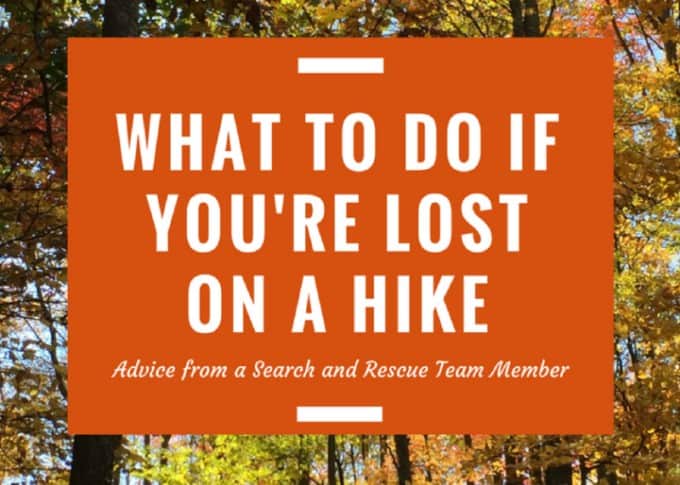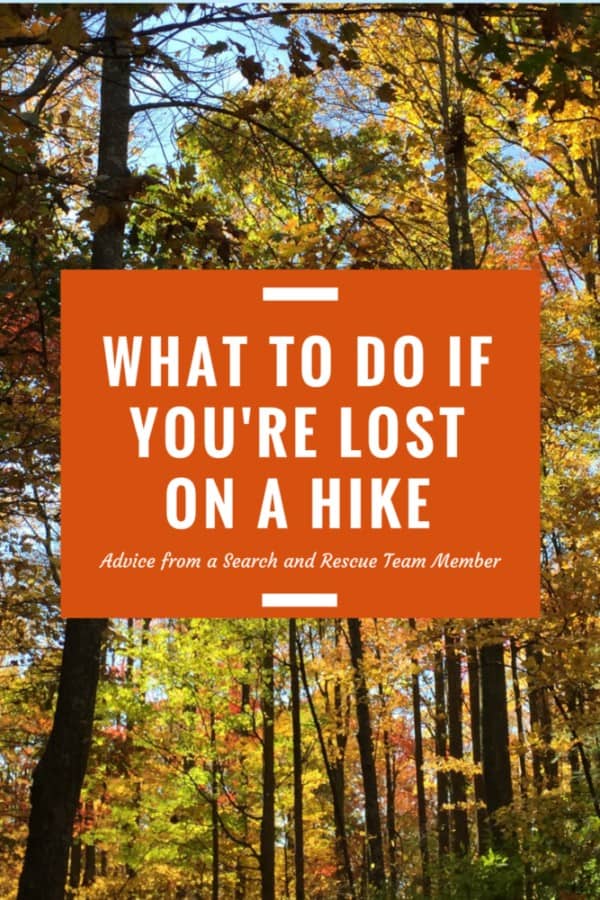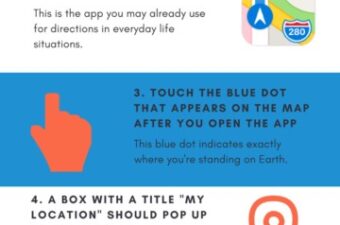So what the heck do you do if you find yourself in this situation? First, pat yourself on the back for bringing your 10 essential “systems,” because it’s going to make a world of difference in your ability to overcome this predicament!
Even in the best of circumstances, a search and rescue team will typically take several hours to reach someone in need. Add hazardous temperatures and/or weather to the mix, and instantly, every second counts. For a hiker, it can literally mean the difference between life and death, depending on their choices before heading out and the steps they take once they are in a compromising situation. I imagine the time it takes to be found or rescued must tick by excruciatingly slow, even for the most prepared hiker. It would be easy to let panic set in, thinking help was never coming.
This brings me to my first point, and it’s a big one: As soon as you realize you’re not sure where you are, STOP HIKING!
Once you stop, the next step is to think of the word “stop” as an acronym. Here’s what it stands for:

Let’s break it down:
- Stop at the first sign of feeling unsure of your whereabouts.
- Think about the last point you knew where you were for certain. Is it far back? How long ago was that point?
- Observe your surroundings and pull out your map and compass. Can you figure out a general area where you might be, based on landmarks and reading your map?
- Plan what you should do next. If you’re certain you aren’t far off course and can simply hike back to the point where you knew where you were, then do that.
Let’s say you don’t have a clue where you got off course, or you thought you knew until you started hiking back and realized you’re more mixed up than you initially believed. Once you’ve calmed yourself down and know you’re going to be okay because you’re smart enough to figure your way out of this mess, take out your phone (that should be in airplane mode or off, prior to this!) and see if you have a signal.
If you’re lucky and you can make a phone call, perfect. If you don’t have a signal but can see and easily reach an area of higher ground on trail, walk there and see if you can find a spot of reception.
If you’re able to find cell reception somewhere, this is not the time to waste your battery and call your mom, your significant other, or someone else you might feel like crying to, because you need to conserve your battery! Instead, take the following steps:
1. Call 911
2. Tell them that you are lost with as many specifics as you know at this point (trail name, wilderness area, national park, etc.).
3. VERY IMPORTANT TIP: The operator you’re speaking with may not know to ask, but make a point to tell them you’d like to share your coordinates from your phone for search and rescue. This is incredibly important and will give them your exact location versus a general area from towers that are pinged from your phone when you made the call. Here’s how you do it:
- Make sure locations services is set to the “on” position. To do this go to Settings > Privacy > Location Services
- Open Apple Maps App
- Touch the blue dot on the map you see after the app opens.
- A box with a title “My Location” should pop up below the map.
- Scroll down and you’ll find latitude and longitude coordinates to share with the operator.
- Occasionally, even if you can’t make a call, you can still send a text message. If that’s the case, send a text to the person you left your itinerary with before you left, indicating you’re lost. You can also send them these coordinates by using the option, “Share My Location” after clicking on the map’s blue dot.
On an Android, take the following steps:
- Open Google Maps
- Press the blue dot and hold it until a red “pin” is dropped on the map.
- Touch the dropped pin and your lat/long coordinates will show up near the bottom of the screen (or possibly in the bar at the top of the screen).
This small step can make a search and rescue team’s job much easier to know exactly where you are (and gets you out of the woods much more quickly)!
If you don’t want to remember these steps, another great option to give your coordinates is by downloading an app called UTM Position Mailer. It costs $1.99, but I think your life is worth that much, don’t you? This app will give you both latitude and longitude coordinates as well as something called UTM coordinates. Most SAR teams operate with UTM coordinates, so those are likely the most helpful but you could read off both, just in case.
What you should NOT do on this phone call is break down and tell them how scared you are or that you’d like him/her to transcribe your final words to your loved ones. You’ve got to keep it together!
Once you disconnect from the call, put your phone back in airplane mode or turn it off, and STAY PUT! Whether you were able to share your location or not, cell towers should have been “pinged” and will triangulate your location, usually providing SAR teams a fairly accurate idea of where you are located. If you move a good distance from where you are, it makes it that much harder to find you, especially when you become a moving target.
4. Pull out what you need to get comfortable for a while from your backpack. Continue to stay calm and know that you’re going to be okay because you’re a smart hiker who came well prepared for a situation like this.
Okay, so you may be reading this and wondering, “But what if I’m not as prepared as I should be and I left most of my 10 Essentials at home because I thought this was going to be an easy hike?” While your odds of survival certainly decrease with challenging conditions like inclement weather, there is still something you can do to save yourself that doesn’t cost a cent and doesn’t weigh a single ounce. It’s what you carry in your heart and it’s called Positive Mental Attitude, or PMA for short.
PMA simply means If you don’t believe you’ll figure a way out of the mess you’re in, you probably won’t. It doesn’t mean you ignore the seriousness of situation you’re in, but it does mean you commit to living another day and not letting the ordeal claim you life. Sure, you could still die with all the PMA in the world, but in many instances, the will to live has kept folks alive in some pretty perilous situations. We won’t give up on you, so don’t give up on yourself! Here’s an article I wrote for Gossamer Gear’s blog about the power of PMA, if you’re interested in learning more about this vital skill.
Aside from all the things you carry in your pack and in your heart and head, if you are ever rescued in a situation like this, be sure to thank the people who find you. Search and rescue teams are largely volunteer organizations. It’s a service I’m honored to be a part of, and sometimes I shake my head in disbelief that I get to be a part of something so amazing.
That being said, date nights are interrupted, kid activities are sidelined, or dinners are not made when we receive calls. And there are certainly people we rescue in precarious situations and our own lives are at risk. I don’t write these things to complain, because I absolutely love what I do and I know every person on our team would say the same thing; however, I hope it’s one more incentive to be smart in the woods and to thank the folks who find you, if you do need help (you’d be surprised at how few people actually do thank us after their ordeal)!
Stay safe out there, friend, and drop a comment below if you have questions or comments!
Happy trails,
Nancy
P.S. If you’d like to read a similar article to this one, but with an added example of a real life SAR operation my team led, head here.



The blog looks AMAZING!!!!! {HUGS} Cintia
Hey Cintia!! You are so sweet and thank you! It’s definitely a labor of love, but it’s the next best thing to being out on a trail, in my opinion. 🙂 I hope you and your sweet family are doing well!